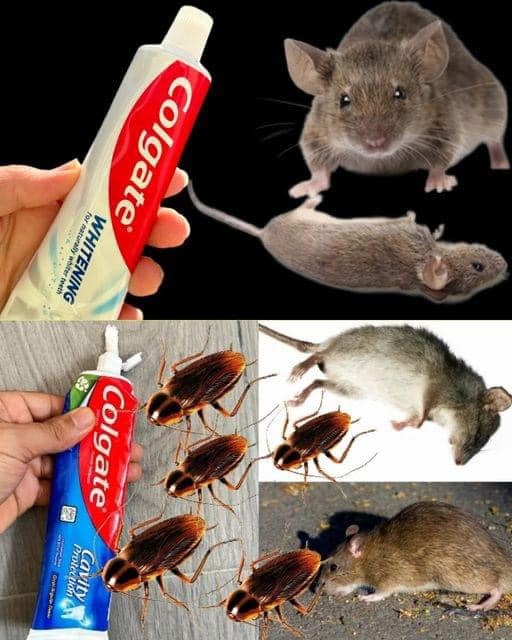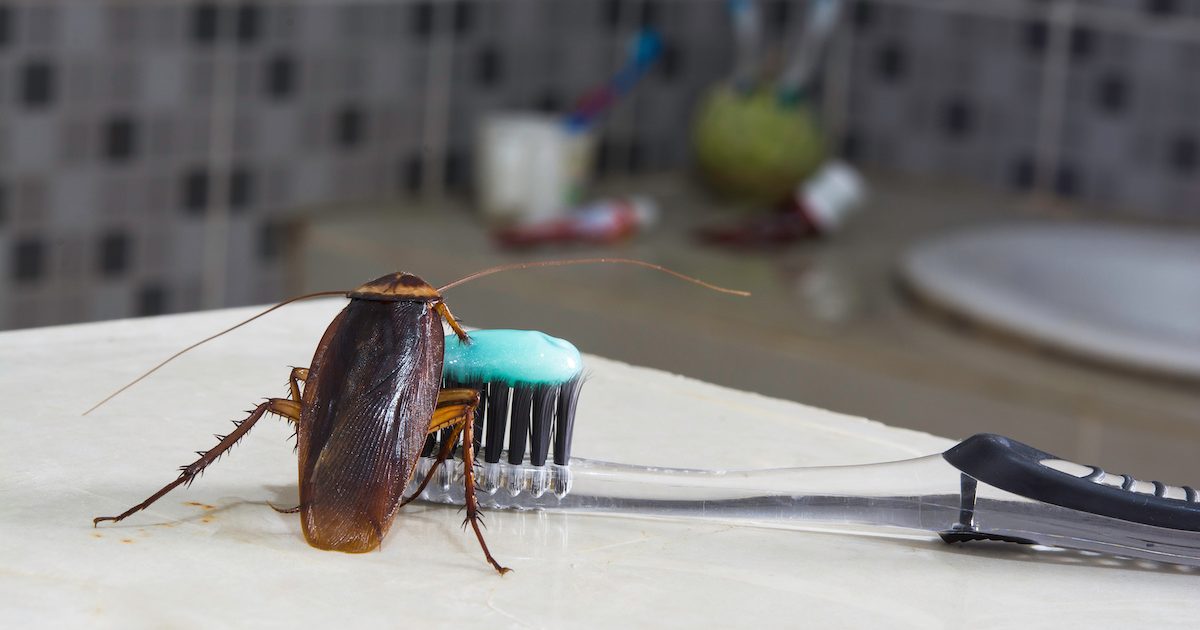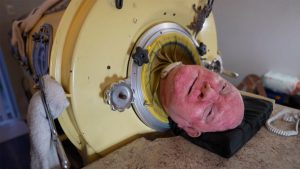
Dealing with cockroaches and ants in the home can be more than just a nuisance — it can affect your comfort, hygiene, and overall sense of well-being. These unwelcome visitors are known for infiltrating kitchens, pantries, bathrooms, and other living spaces, often drawn by warmth, moisture, and accessible food. While many people turn to chemical insecticides, there’s growing interest in gentler, budget-friendly home solutions — including one simple yet surprising tool: toothpaste.
Although toothpaste is best known for maintaining oral hygiene, some homeowners have found that certain ingredients in it may help discourage ants and cockroaches from invading their homes. This guide explores how you can use toothpaste — paired with other common kitchen items — as part of a non-toxic strategy to help deter pests in a natural and cost-effective way.
⚠️ Disclaimer: This method is considered a home remedy. While it may be helpful in deterring pests, it is not a substitute for professional pest control in the case of infestations.
Why Cockroaches and Ants Invade Homes
Before diving into the solution, it helps to understand what attracts these pests. Cockroaches are especially drawn to dark, humid environments with easy access to food and water. Crumbs on the floor, leaks under the sink, or pet food left overnight can all become a feast for these resilient insects.
Similarly, ants typically enter homes in search of food, particularly sugary substances. Once they locate a source, they leave a pheromone trail for others to follow, which is why you may see long ant trails appear suddenly.

The Toothpaste Trick: What Makes It Work
The so-called “toothpaste trick” relies on the idea that certain ingredients found in common toothpaste varieties — particularly mint (menthol) and, in some cases, mild abrasives — may disrupt the scent trails that ants use to navigate and deter cockroaches through their strong odor.
While most commercial toothpaste does not contain boric acid, which is a well-known pest control agent, the mint scent can still serve as a natural deterrent. Ants rely heavily on scent communication, and cockroaches tend to avoid strong smells they aren’t accustomed to.
The method involves using a homemade paste or bait ball made with toothpaste and household ingredients to discourage pests from returning to key areas of the home.

How to Make a DIY Toothpaste Pest Deterrent
This easy-to-make mixture combines a few pantry staples and is safe for households with children and pets (when used correctly and kept out of reach). The idea is to attract the insects using sugar, while the scent of the toothpaste masks or disrupts their ability to communicate or locate food.
Ingredients:
-
3 tablespoons of sugar (to attract the pests)
-
4 tablespoons of flour (acts as a binder)
-
3 tablespoons of regular toothpaste (preferably mint-flavored)
-
3 tablespoons of water
Instructions:
-
In a small mixing bowl, combine the sugar, flour, and toothpaste.
-
Gradually add water while stirring until you create a thick, uniform dough.
-
Shape the dough into small balls — approximately the size of a walnut.
-
Place these balls in areas where ants or cockroaches are commonly seen, such as:
-
Behind kitchen appliances
-
Under the sink
-
Near baseboards
-
Along windowsills or entry points
-
Note: Keep these bait balls out of reach of small children and pets to avoid accidental ingestion.

Where and How to Apply Toothpaste as a Barrier
If you prefer not to make the bait mixture, you can also use plain toothpaste as a barrier treatment:
-
Apply a thin line of toothpaste along windowsills, doorways, baseboards, or other common entry points.
-
The minty scent may confuse or deter ants, interrupting their trail-following behavior.
-
Reapply every few days, especially after cleaning or rain, as toothpaste can dry out or get washed away.

How Often Should You Reapply?
For best results, repeat the process 2–3 times a week. Since this method uses non-toxic ingredients, it requires more frequent application than chemical insecticides but comes with fewer health risks.
Regular reapplication is especially important in high-traffic areas, during warm seasons, or when pest activity is more noticeable.
Why This Method Is Considered Safe
One of the biggest advantages of this toothpaste trick is that it does not rely on commercial chemicals or toxins. This makes it especially appealing for households that are cautious about using sprays or poisons near food, pets, or children.
Toothpaste, sugar, and flour are all common, food-safe substances — though they should still be used responsibly. The bait balls should be placed strategically in corners and out-of-reach areas where pests travel, but not where children or animals may play or eat.

Limitations of the Toothpaste Method
It’s important to manage expectations when using this home remedy. While the toothpaste method may help reduce pest activity in the short term, it is not a guaranteed solution — especially in cases of serious infestation.
If you notice:
-
A large number of cockroaches during the day (a sign of overpopulation)
-
Multiple ant colonies inside your home
-
Unusual pest behavior despite regular cleaning
…it may be time to consult a licensed pest control professional for a targeted and long-term solution.

Additional Tips for a Pest-Free Home
The most effective pest control always starts with prevention. Here are a few tips to help minimize the chance of future infestations:
-
Keep all food sealed in airtight containers.
-
Wipe down counters and kitchen surfaces daily to remove crumbs or spills.
-
Fix leaks and eliminate standing water under sinks or in basements.
-
Take out trash regularly, and avoid leaving garbage indoors overnight.
-
Seal cracks and gaps around windows, doors, and walls.
By maintaining a clean and sealed environment, you reduce the chances of attracting unwanted insects — and make any home remedy, like the toothpaste trick, even more effective.
Conclusion: A Simple Home Trick Worth Trying
While not scientifically proven or officially endorsed by pest control authorities, the toothpaste trick is a simple, safe, and affordable home remedy that many people have used to help deter cockroaches and ants. It may not replace professional treatment, but it can serve as a helpful first line of defense or a complementary method in your pest management routine.
If you’re looking for a natural approach that’s easy to try with ingredients already in your home, this DIY mixture might be worth testing in problem areas. Just remember to apply it consistently, monitor pest activity, and keep your living space clean to support the best possible results.


